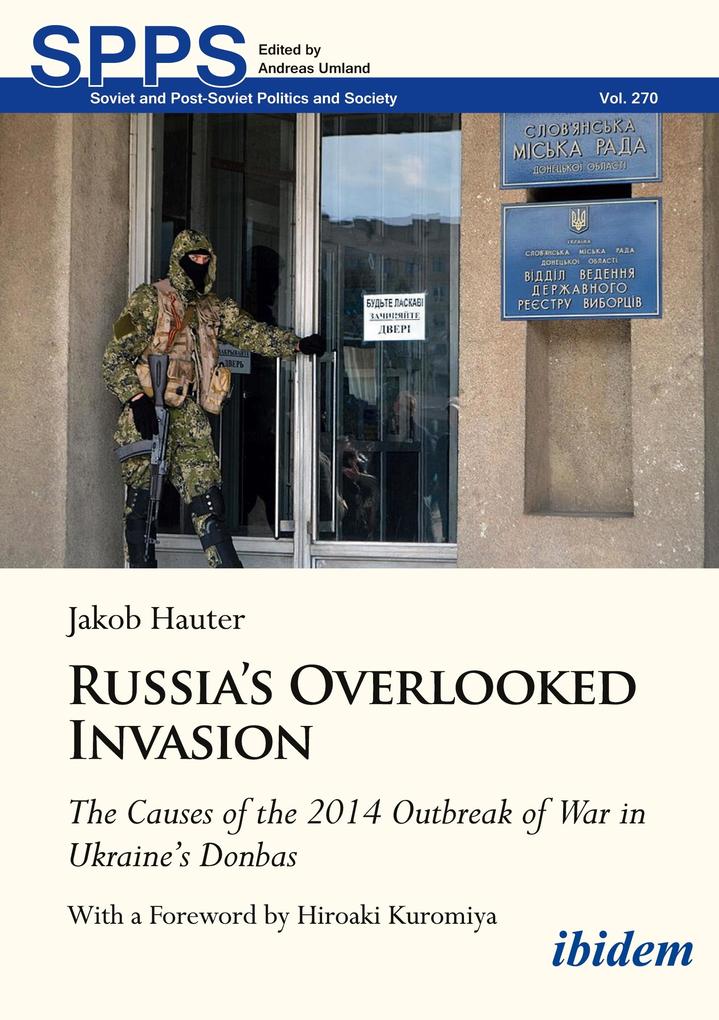
Zustellung: Sa, 16.11. - Di, 19.11.
Versand in 2 Tagen
VersandkostenfreiBestellen & in Filiale abholen:
The war in Ukraine did not start on 24 February 2022. It began eight years earlier in eastern Ukraine's Donbas region. In his new book, Jakob Hauter investigates the escalation of violence in the spring and summer of 2014. He demonstrates that, contrary to popular belief, the pre-2022 conflict was not a civil war. Ukraine has been fighting a Russian invasion since the armed conflict's very beginning. Hauter arrives at this conclusion based on a thorough review of the digital open source information (DOSI) available on the Internet. He argues that social science research needs theoretical and methodological innovation to operate in the abundant but murky information environment surrounding the Donbas War and other conflicts of the social media age. To address this challenge, he develops an escalation sequence model which divides the formative phase of the Donbas War into six critical junctures. He then combines the social science methodology of process tracing with DOSI analysis to investigate the causes of these critical junctures. For each juncture, Hauter assesses the available evidence of domestic causes and Russian interference, reaching the conclusion that, in most cases, there is convincing evidence that Russian involvement was the primary cause of armed escalation."This excellent, meticulously researched book is important. Not only does it provide fresh insights based on forensic analysis into the escalation of violence in Ukraine's Donbas region in 2014, it breaks new methodological ground: It shows how process tracing and the use of digital open source information can be combined in a rigorous way to deal with the informational challenges associated with conflict. Russia's Overlooked Invasion brings much-needed transparency to an opaque but vital subject."-Ben Noble, Associate Professor of Russian Politics, UCL SSEES"Most previous accounts of the war in Eastern Ukraine have not gone beyond generalities. Hauter uses open source Intelligence for a forensic analysis, breaking down the events leading to war into six critical junctures, in four of which Russia is shown to have been the primary actor. Without Russia, moreover, there would have been no necessary progression through the six phases, and a containable conflict would not have become a hot war."-Andrew Wilson, Professor of Ukrainian Studies, UCL SSEES
Jetzt reinlesen: Inhaltsverzeichnis(pdf)Mehr aus dieser Reihe
Produktdetails
Erscheinungsdatum
04. September 2023
Sprache
englisch
Auflage
Auflage
Seitenanzahl
330
Altersempfehlung
ab 12 Jahre
Reihe
Soviet and Post-Soviet Politics and Society, 270
Autor/Autorin
Jakob Hauter
Herausgegeben von
Andreas Umland
Serie hrsg. von
Andreas Umland
Vorwort
Hiroaki Kuromiya
Kamera/Fotos von
Yevgen Nasadyuk
Weitere Beteiligte
Hiroaki Kuromiya
Verlag/Hersteller
Produktart
kartoniert
Gewicht
428 g
Größe (L/B/H)
210/148/18 mm
Sonstiges
Paperback
ISBN
9783838218038
Entdecken Sie mehr
Pressestimmen
"This excellent, meticulously researched book is important. Not only does it provide fresh insights based on forensic analysis into the escalation of violence in Ukraine's Donbas region in 2014, it breaks new methodological ground: It shows how process tracing and the use of digital open source information can be combined in a rigorous way to deal with the informational challenges associated with conflict. Russia's Overlooked Invasion brings much-needed transparency to an opaque but vital subject." -Ben Noble, Associate Professor of Russian Politics, UCL SSEES
Bewertungen
0 Bewertungen
Es wurden noch keine Bewertungen abgegeben. Schreiben Sie die erste Bewertung zu "Russia's Overlooked Invasion" und helfen Sie damit anderen bei der Kaufentscheidung.

































